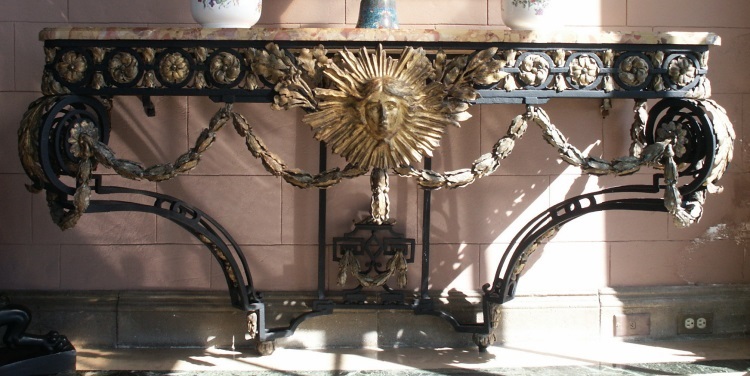
Portrait bust of Julius Caesar in bronze
The bust and the pedestal were purchased separately by Doris Duke in 1962 from the sale of the contents of The Elms, the Bellevue Avenue mansion owned by the Berwind family and designed by Horace Trumbauer.

The bust and the pedestal were purchased separately by Doris Duke in 1962 from the sale of the contents of The Elms, the Bellevue Avenue mansion owned by the Berwind family and designed by Horace Trumbauer.

The bust and the pedestal were purchased separately by Doris Duke in 1962 from the sale of the contents of The Elms, the Bellevue Avenue mansion owned by the Berwind family and designed by Horace Trumbauer.

This one-handled porringer, by Newporter Jonathan Otis, has an elegant, curvaceous form that was more decorative than functional. Porringers—originally used as something like a cross between a bowl and a cup—fell out of fashion in Britain by the time this porringer was made in the mid 1700s. But porringers remained a popular item in the British North American colonies as a symbolic gift marking important moments—like a christening or a wedding. On objects like tankards and porringers, families would often include genealogical details etched into the silver to mark anniversaries, or to celebrate accomplishments or significant dates.
Otis’s house is also in NRF’s collection of preservation properties, at 109 Spring Street.

This pair of tables is in the style of later 18th-century French Louis XVI wall consoles, but they were made in the 19th century to match the scale and opulence of Gilded Age mansions. They were part of the furnishings of the New York mansion where Doris Duke grew up, but moved to Rough Point’s Solarium at Rough Point in the late 1950s.

This pair of whimsical mechanical pieces were made in England for export to India and China. To fit English perceptions of Asian aesthetics, a pagoda shape includes animals such as elephants and ostriches. When operating, the devices play one of six tunes, and ships and horseback riders parade through painted backdrops revolving behind glass panels in the base. The automatons or “sing-songs” were acquired by Doris Duke in Bangkok, Thailand, in the 1960s.